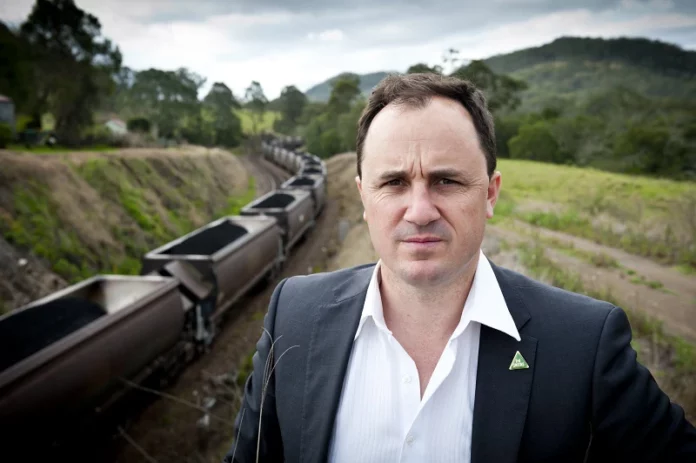
Legalise Cannabis is confident of winning its first seat in the New South Wales upper house, after early counting suggests it outpolled the Shooters, Fishers and Farmers and rivalled One Nation in its popularity among voters.
Almost 25 per cent of the Legislative Council vote had been counted by late Monday, but the make-up of the chamber will not be confirmed for several weeks, until preferences are counted and votes are exhausted.
Early numbers suggested Labor could pick up eight spots, the Coalition six, and the Greens two, although the parties remained hopeful of more.
One Nation attracted just over 5 per cent of the vote in a slight swing against the party, suggesting it would pick up at least one spot. That would give the party three upper house seats, one more than in the last parliament.
Legalise Cannabis was the fifth most popular, and leader Jeremy Buckingham, a former Greens MLC, was confident of picking up a spot. He said the vote was “a massive breakthrough” for the party, which also has representatives in other states.
His campaign was supported by high-profile donors including philanthropist Nick Fairfax, teal backer Rob Keldoulis, former prime minister Malcolm Turnbull’s son Alex and philanthropists Sue and John McKinnon.
‘I don’t think we’re going to know the balance of the upper house [for a while], whether it’s controlled by the Coalition with a handful of right-wing parties, or whether we’ve got progressive parties in the balance of power.’
The party also did well in some lower house seats and has surged in popularity since it changed its name from the Help End Marijuana Prohibition (HEMP) party in 2021. “One in eight people voted for the Legalise Cannabis party in Cessnock,” Buckingham said.
“On the Mid North Coast, one in 10 people [voted for the party]. That’s a huge result for any political party, especially one that’s only a year old.” One of his priorities would be pushing for people who use medicinal cannabis to legally drive.
Chris Minns steered Labor to a thumping victory in NSW promising to ease cost of living while opposing Liberal projects like subsidised savings accounts for children.
Buckingham said the party picked up its 3.5 to four per cent share of upper house votes from the left and the right of the political spectrum. “It’s got broad geographic and demographic support,” he said. “You’ve only got to look to America, where you’ve got [Bible belt] states like Missouri legalising cannabis.”
The Liberal Democrats, a small-government, civil liberties party, had 3 per cent of the vote late on Monday. The Shooters are likely to scrape over the line for 20th spot.
The last spot, the 21st, is expected to be a contest between the Coalition and the Animal Justice Party, but the fact that the other major parties did not preference the Coalition could give the edge to the AJP.
A Liberal Democrats spokesman said that while it was “confident” of a seat, it was reluctant to predict a victory given the party’s experience in the 2019 election, when candidate David Leyonhjelm was on track for an upper house berth until late in the count, when a strong flow of preferences rewarded the Animal Justice Party’s Emma Hurst.
In 2011, One Nation’s Pauline Hanson looked likely to scrape into the NSW upper house in 20th place before preferences from one of the last candidates to be eliminated, Family First’s Gordon Moyes, helped the Coalition and Greens overtake her.
Greens drug reform spokeswoman Cate Faehrmann said the party was confident of two spots, and “there’s fingers crossed for a third”, she said. The upper house count takes weeks, and the outcome can change as final preferences are distributed.
Faehrmann said: “I don’t think we’re going to know the balance of the upper house [for a while], whether it’s controlled by the Coalition with a handful of right-wing parties, or whether we’ve got progressive parties in the balance of power.”
The formal result will not be known until late April, when keen observers will gather at the Electoral Commission and watch officials press a button, which will reveal the names of those who have been elected to the 21 seats.













